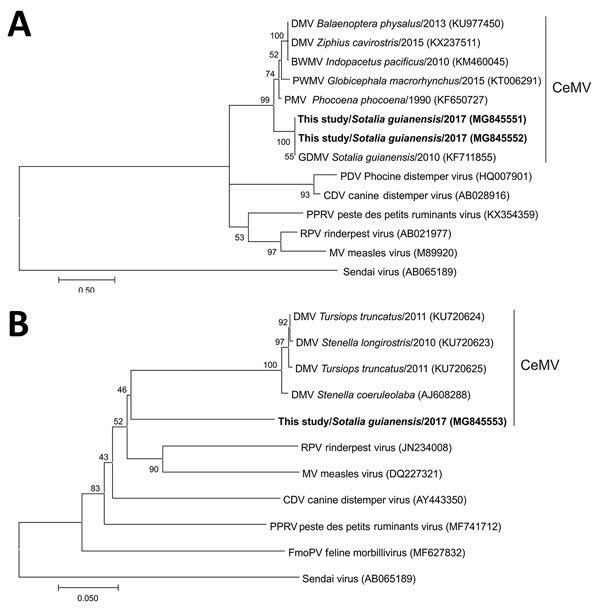Volume 24, Number 7—July 2018
Dispatch
Guiana Dolphin Unusual Mortality Event and Link to Cetacean Morbillivirus, Brazil
Figure 1

Figure 1. Phylogenetic tree showing partial sequence of A) morbillivirus phosphoprotein and B) large protein genes of cetacean morbillivirus (CeMV) isolates found in stranded Guiana dolphins (Sotalia guianensis) from Rio de Janeiro, Brazil (bold), 2017, and those of other previously described morbilliviruses. Sendai virus was added as an outgroup. Trees were generated by the maximum-likelihood method (A) and neighbor-joining method (B); bootstrap values (1,000 replicates) are indicated at the internal nodes. For comparison, recognized CeMV strains were included when available. Sequence names are followed by species, year of stranding (when available), and GenBank accession number. Scale bars indicate nucleotide substitutions per site. PMV, porpoise morbillivirus; DMV, dolphin morbillivirus; BWMV, beaked whale morbillivirus; PWMV, pilot whale morbillivirus.